Abstract
Complement prevents the formation of insoluble immune complexes (inhibition of immune precipitation (IIP], and solubilizes preformed immune aggregates (solubilization (SOL]. Since the mechanism of complement activation differs in these two reactions, it is possible that they differ also in the amount of complement fragments released, in particular the anaphylatoxins C3a, C5a and C4a. We measured C4 and C3 consumption, and the formation of complement anaphylatoxins during IIP and SOL using two different immune complex models (BSA, rabbit anti-BSA; tetanus toxoid (TT), human anti-TT). At equal immune complex concentrations in both models, SOL was more efficient than IIP at cleaving C3, and more C3a and C5a was released. Comparing the two reactions, C3a formation was followed by more C5 cleavage (C5a) during SOL. Similarly C4a formation (classical pathway activation) was followed by more C3 cleavage (C3a: classical and alternative pathway activations), during SOL. It is suggested that in vivo SOL of insoluble complexes is rapidly accompanied by a damaging phlogistic reaction, whereas IIP produces less inflammation.
Full text
PDF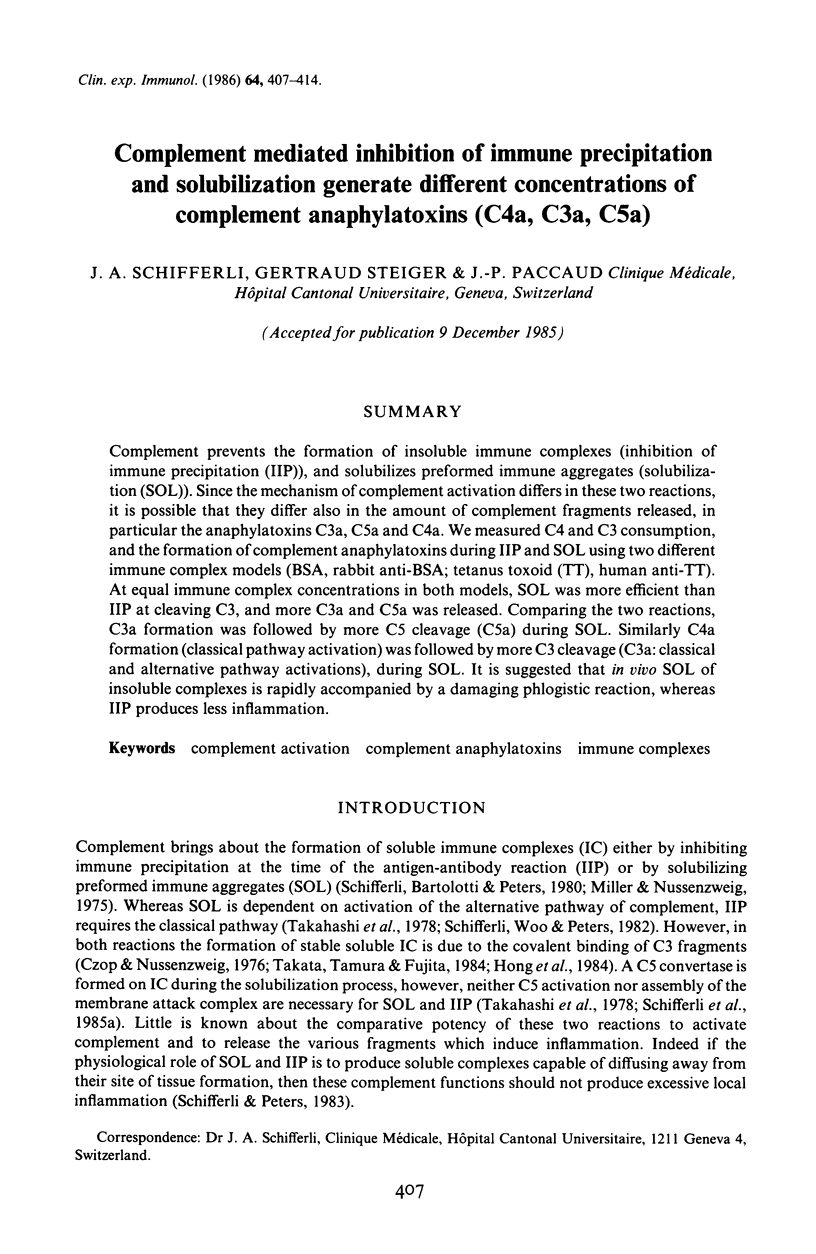
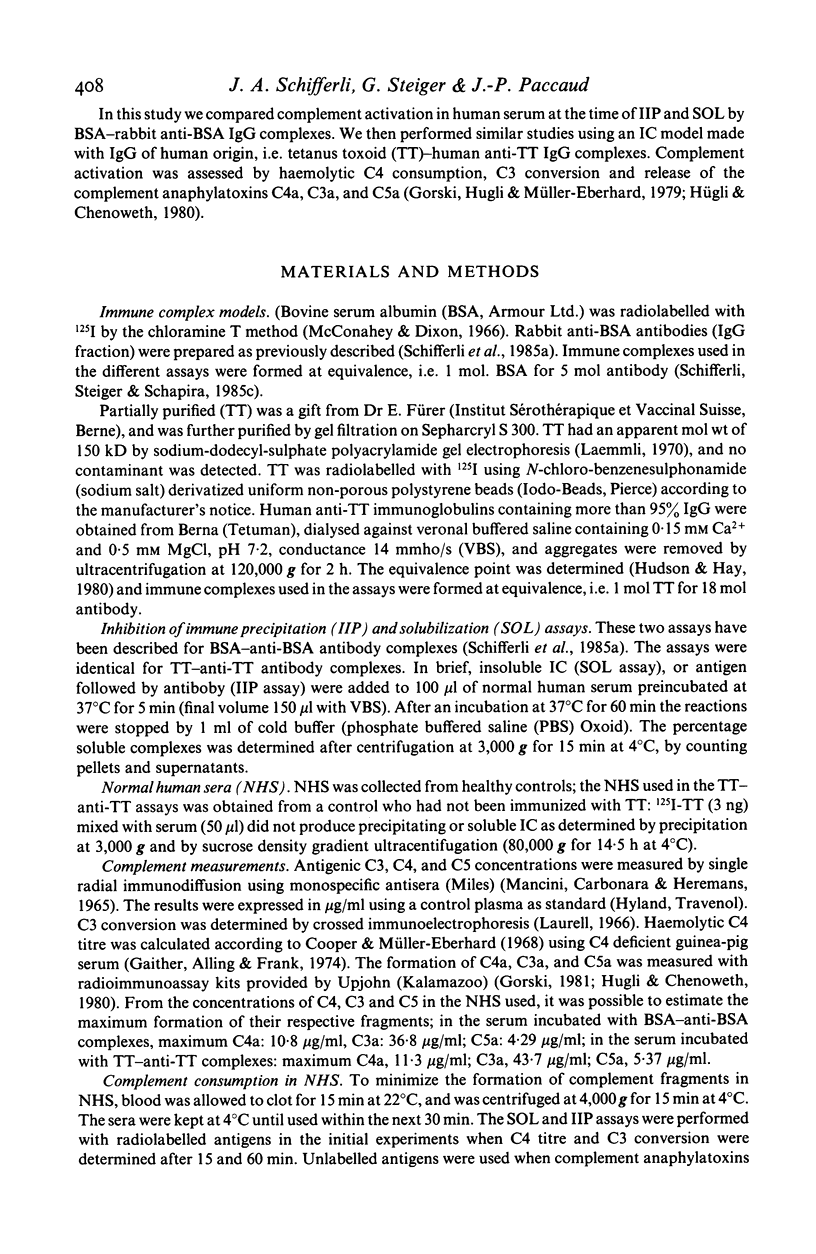
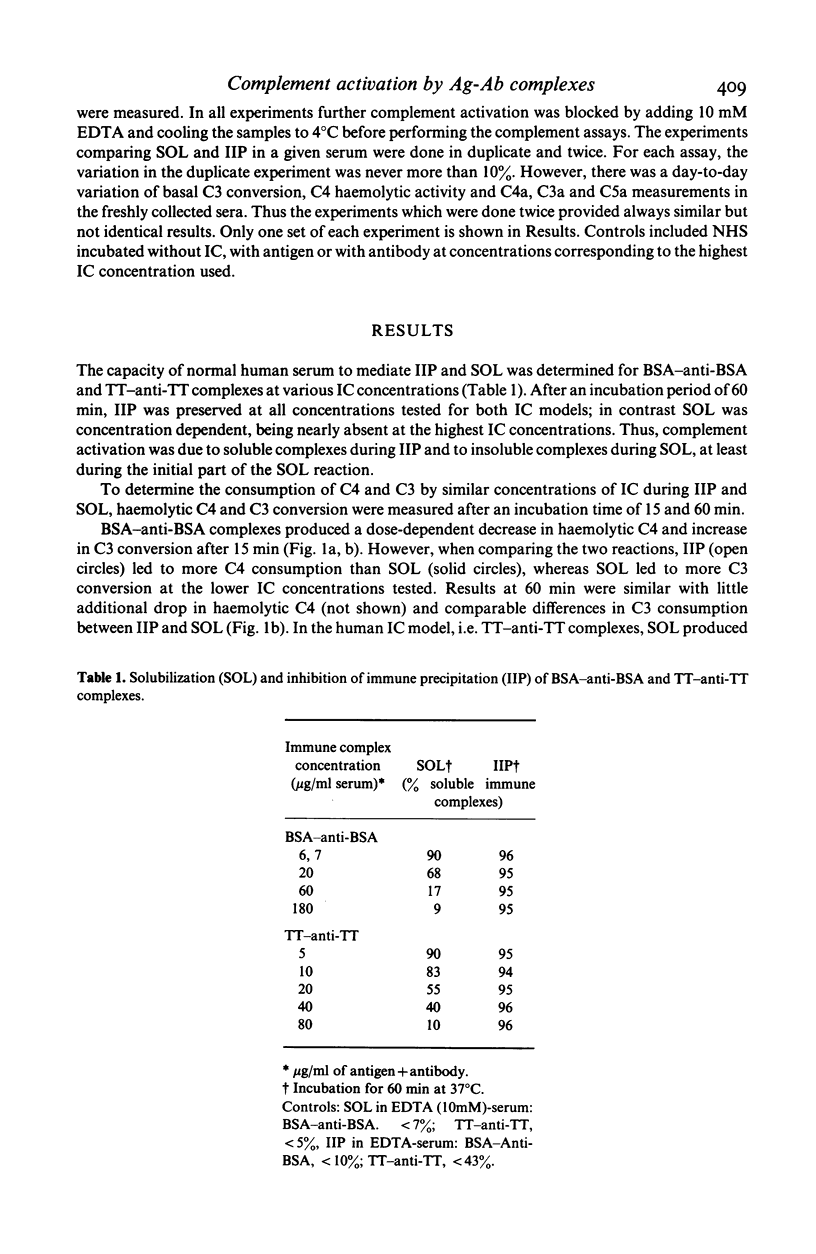
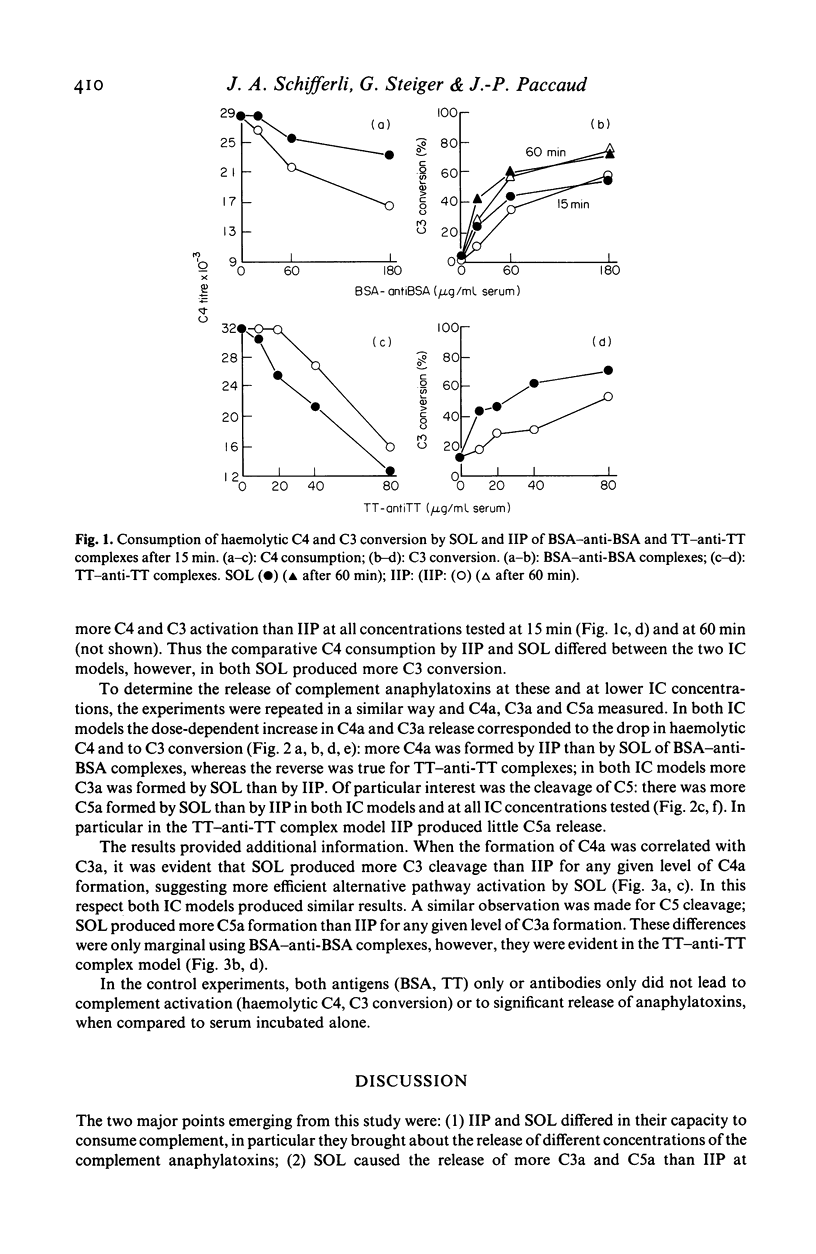
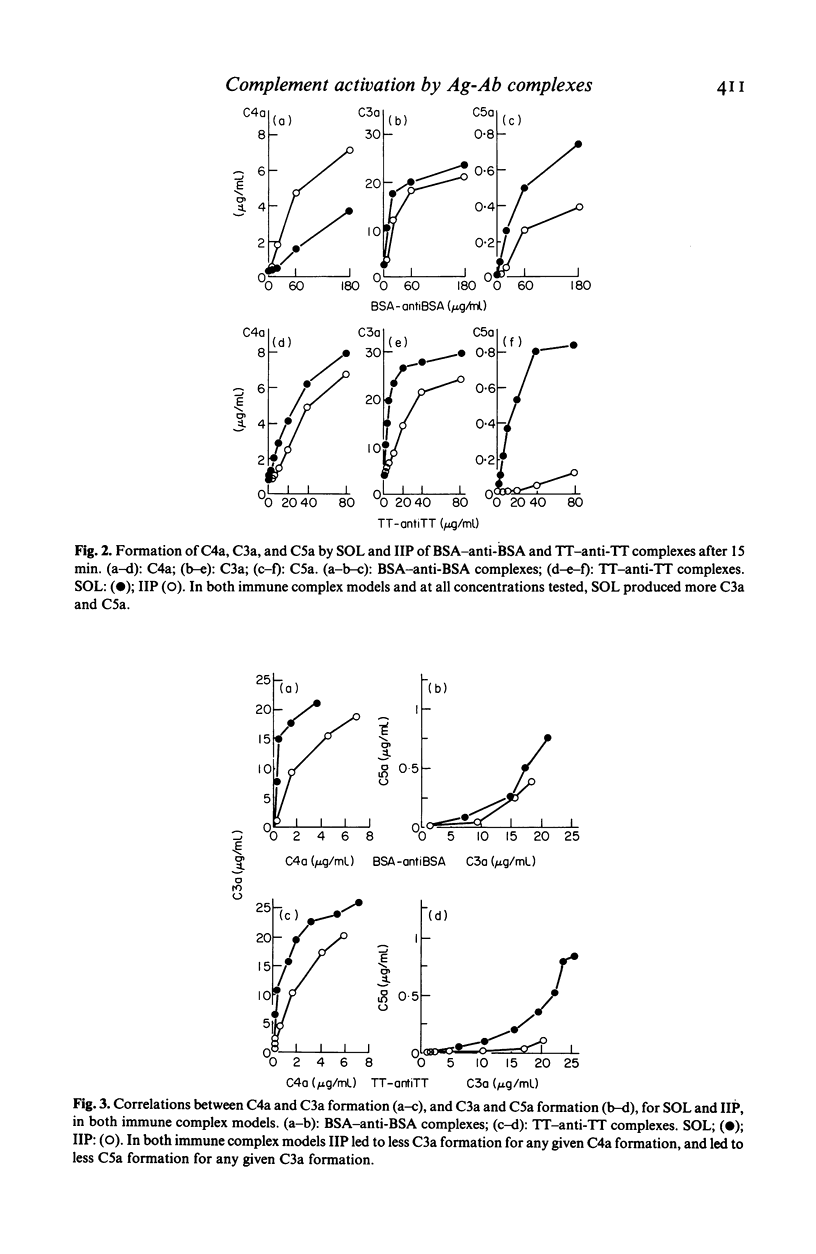
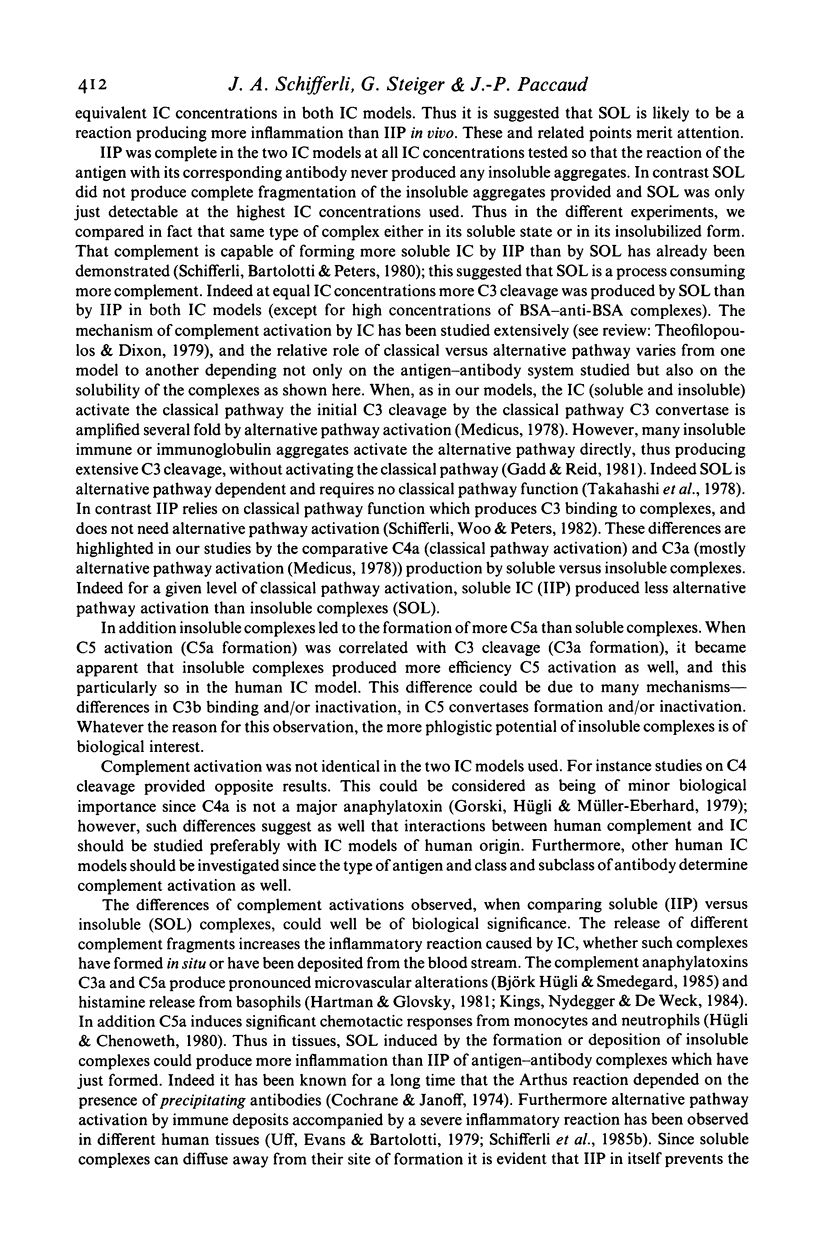
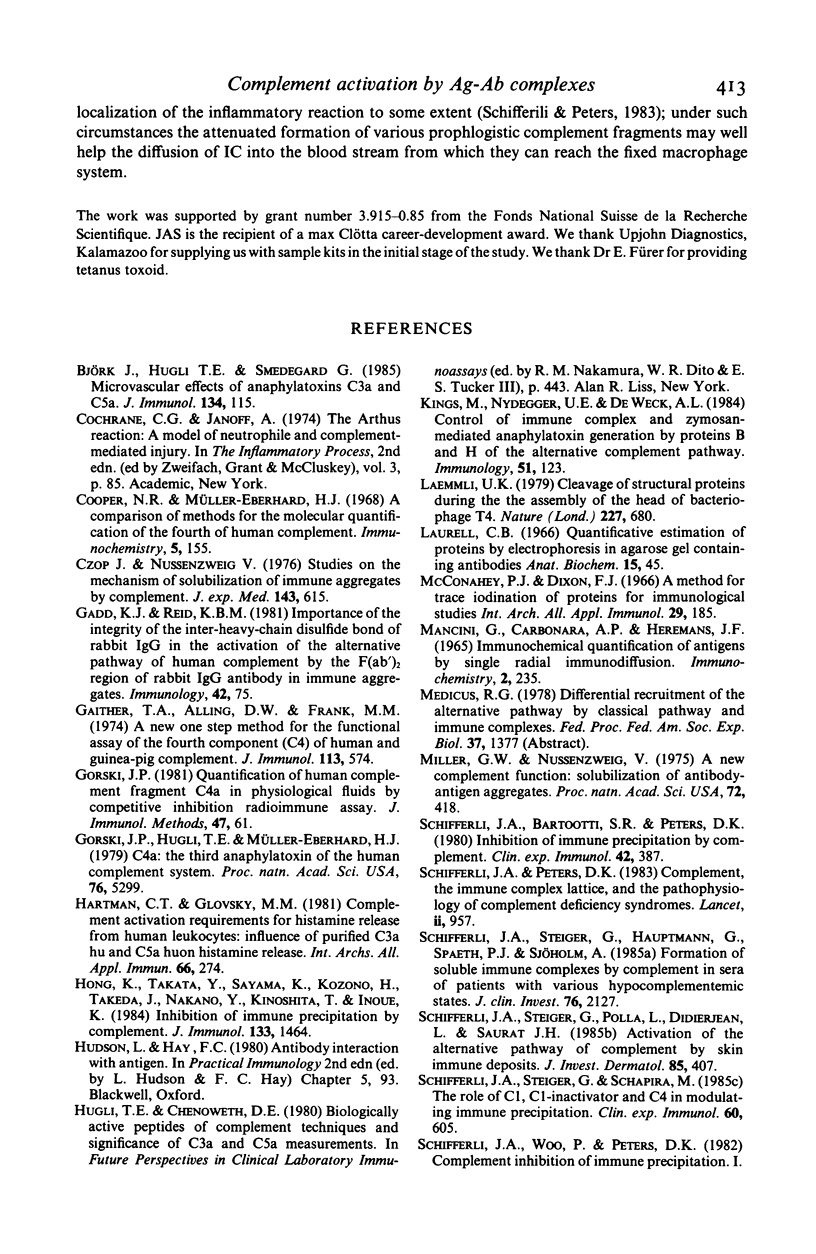
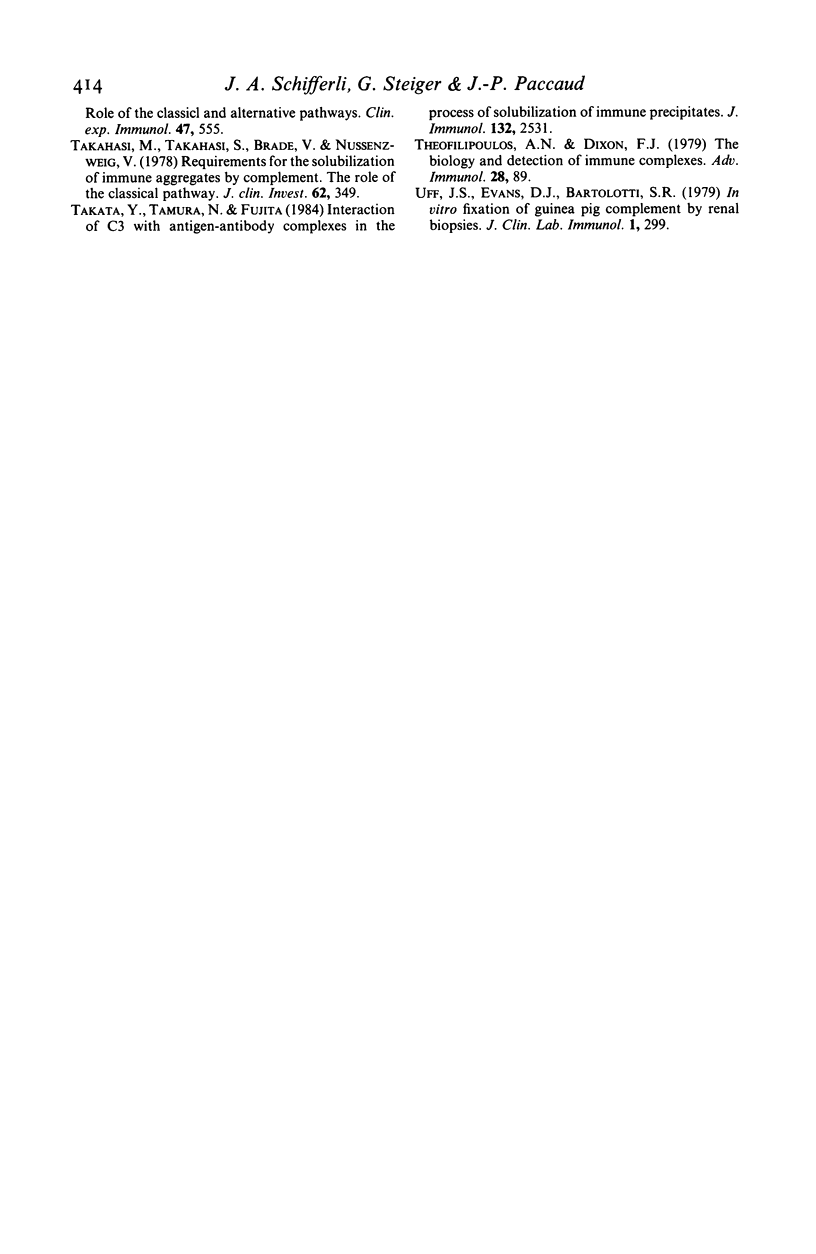
Selected References
These references are in PubMed. This may not be the complete list of references from this article.
- Cooper N. R., Müller-Eberhard H. J. A comparison of methods for the molecular quantitation of the fourth component of human complement. Immunochemistry. 1968 Mar;5(2):155–169. doi: 10.1016/0019-2791(68)90100-6. [DOI] [PubMed] [Google Scholar]
- Czop J., Nussenzweig V. Studies on the mechanism of solubilization of immune precipitates by serum. J Exp Med. 1976 Mar 1;143(3):615–630. doi: 10.1084/jem.143.3.615. [DOI] [PMC free article] [PubMed] [Google Scholar]
- Gadd K. J., Reid K. B. Importance of the integrity of the inter-heavy-chain disulphide bond of rabbit IgG in the activation of the alternative pathway of human complement by the F(ab')2 region of rabbit IgG antibody in immune aggregates. Immunology. 1981 Jan;42(1):75–82. [PMC free article] [PubMed] [Google Scholar]
- Gaither T. A., Alling D. W., Frank M. M. A new one-step method for the functional assay of the fourth component (C4) of human and guinea pig complement. J Immunol. 1974 Aug;113(2):574–583. [PubMed] [Google Scholar]
- Gorski J. P., Hugli T. E., Müller-Eberhard H. J. C4a: the third anaphylatoxin of the human complement system. Proc Natl Acad Sci U S A. 1979 Oct;76(10):5299–5302. doi: 10.1073/pnas.76.10.5299. [DOI] [PMC free article] [PubMed] [Google Scholar]
- Gorski J. P. Quantitation of human complement fragment C4ai in physiological fluids by competitive inhibition radioimmune assay. J Immunol Methods. 1981;47(1):61–73. doi: 10.1016/0022-1759(81)90257-x. [DOI] [PubMed] [Google Scholar]
- Hartman C. T., Jr, Glovsky M. M. Complement activation requirements for histamine release from human leukocytes: influence of purified C3ahu and C5ahu on histamine release. Int Arch Allergy Appl Immunol. 1981;66(3):274–281. doi: 10.1159/000232831. [DOI] [PubMed] [Google Scholar]
- Hong K., Takata Y., Sayama K., Kozono H., Takeda J., Nakano Y., Kinoshita T., Inoue K. Inhibition of immune precipitation by complement. J Immunol. 1984 Sep;133(3):1464–1470. [PubMed] [Google Scholar]
- Kings M., Nydegger U. E., de Weck A. L. Control of immune complex and zymosan-mediated anaphylatoxin generation by proteins B and H of the alternative complement pathway. Immunology. 1984 Jan;51(1):123–131. [PMC free article] [PubMed] [Google Scholar]
- Laemmli U. K. Cleavage of structural proteins during the assembly of the head of bacteriophage T4. Nature. 1970 Aug 15;227(5259):680–685. doi: 10.1038/227680a0. [DOI] [PubMed] [Google Scholar]
- Laurell C. B. Quantitative estimation of proteins by electrophoresis in agarose gel containing antibodies. Anal Biochem. 1966 Apr;15(1):45–52. doi: 10.1016/0003-2697(66)90246-6. [DOI] [PubMed] [Google Scholar]
- Mancini G., Carbonara A. O., Heremans J. F. Immunochemical quantitation of antigens by single radial immunodiffusion. Immunochemistry. 1965 Sep;2(3):235–254. doi: 10.1016/0019-2791(65)90004-2. [DOI] [PubMed] [Google Scholar]
- McConahey P. J., Dixon F. J. A method of trace iodination of proteins for immunologic studies. Int Arch Allergy Appl Immunol. 1966;29(2):185–189. doi: 10.1159/000229699. [DOI] [PubMed] [Google Scholar]
- Miller G. W., Nussenzweig V. A new complement function: solubilization of antigen-antibody aggregates. Proc Natl Acad Sci U S A. 1975 Feb;72(2):418–422. doi: 10.1073/pnas.72.2.418. [DOI] [PMC free article] [PubMed] [Google Scholar]
- Schifferli J. A., Bartolotti S. R., Peters D. K. Inhibition of immune precipitation by complement. Clin Exp Immunol. 1980 Nov;42(2):387–394. [PMC free article] [PubMed] [Google Scholar]
- Schifferli J. A., Peters D. K. Complement, the immune-complex lattice, and the pathophysiology of complement-deficiency syndromes. Lancet. 1983 Oct 22;2(8356):957–959. doi: 10.1016/s0140-6736(83)90464-6. [DOI] [PubMed] [Google Scholar]
- Schifferli J. A., Steiger G., Hauptmann G., Spaeth P. J., Sjöholm A. G. Formation of soluble immune complexes by complement in sera of patients with various hypocomplementemic states. Difference between inhibition of immune precipitation and solubilization. J Clin Invest. 1985 Dec;76(6):2127–2133. doi: 10.1172/JCI112217. [DOI] [PMC free article] [PubMed] [Google Scholar]
- Schifferli J. A., Steiger G., Polla L., Didierjean L., Saurat J. H. Activation of the alternative pathway of complement by skin immune deposits. J Invest Dermatol. 1985 Nov;85(5):407–411. doi: 10.1111/1523-1747.ep12277069. [DOI] [PubMed] [Google Scholar]
- Schifferli J. A., Steiger G., Schapira M. The role of C1, C1-inactivator and C4 in modulating immune precipitation. Clin Exp Immunol. 1985 Jun;60(3):605–612. [PMC free article] [PubMed] [Google Scholar]
- Schifferli J. A., Woo P., Peters D. K. Complement-mediated inhibition of immune precipitation. I. Role of the classical and alternative pathways. Clin Exp Immunol. 1982 Mar;47(3):555–562. [PMC free article] [PubMed] [Google Scholar]
- Takahashi M., Takahashi S., Brade V., Nussenzweig V. Requirements for the solubilization of immune aggregates by complement. The role of the classical pathway. J Clin Invest. 1978 Aug;62(2):349–358. doi: 10.1172/JCI109135. [DOI] [PMC free article] [PubMed] [Google Scholar]
- Takata Y., Tamura N., Fujita T. Interaction of C3 with antigen-antibody complexes in the process of solubilization of immune precipitates. J Immunol. 1984 May;132(5):2531–2537. [PubMed] [Google Scholar]
- Theofilopoulos A. N., Dixon F. J. The biology and detection of immune complexes. Adv Immunol. 1979;28:89–220. doi: 10.1016/s0065-2776(08)60800-7. [DOI] [PubMed] [Google Scholar]
- Uff J. S., Evans D. J., Bartolotti S. R. In vitro fixation of guinea pig complement by renal biopsies. J Clin Lab Immunol. 1979 Feb;1(4):299–304. [PubMed] [Google Scholar]


